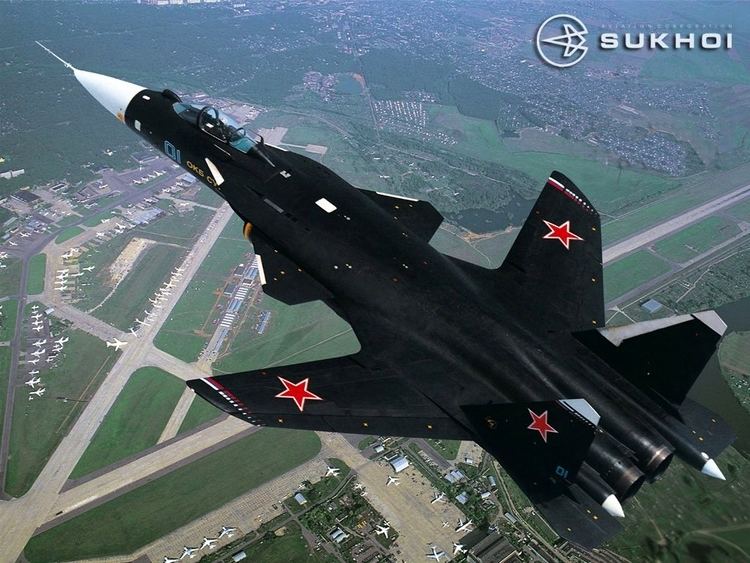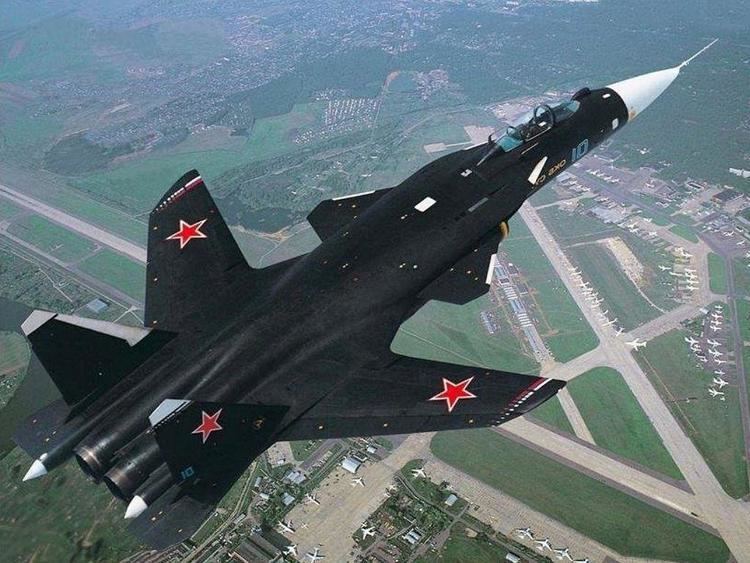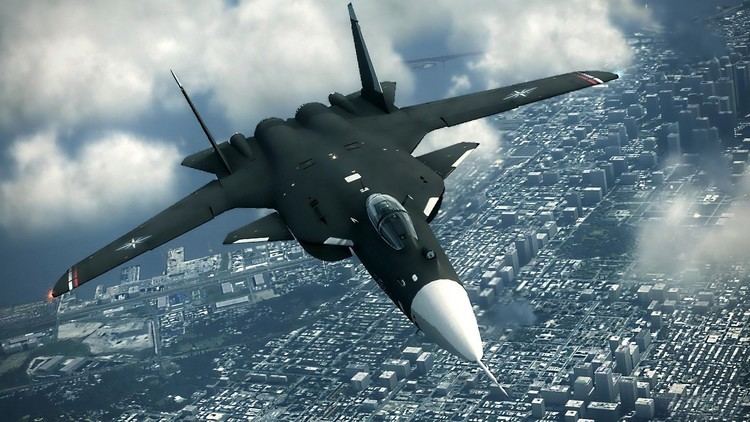Top speed 2,500 km/h Weight 16,380 kg Wingspan 15 m | Range 3,300 km Length 23 m | |
 | ||
Unit cost 70,000,000–70,000,000 USD (2013) Engine types Saturn AL-31, Soloviev D-30 | ||
The Sukhoi Su-47 Berkut (Russian: Сухой Су-47 Беркут—Golden Eagle) (NATO reporting name Firkin), also designated S-32 and S-37 (not to be confused with the twin-engined delta canard design offered by Sukhoi in the early 1990s under the designation Su-37) during initial development, was an experimental supersonic jet fighter developed by Sukhoi Aviation Corporation. A distinguishing feature of the aircraft was its forward-swept wing that gave the aircraft excellent agility and maneuverability. While serial production of the type never materialized, the sole aircraft produced served as a technology demonstrator prototype for a number of advanced technologies later used in the 4.5 generation fighter SU-35BM and current fifth-generation jet fighter prototype Sukhoi PAK FA T-50.
Contents
- Russian supersonic jet fighter sukhoi su 47 berkut ruski supersoni ni mlazni lovac su 47
- Development
- Design
- Maneuverability
- Wings
- Thrust vectoring
- Specifications Su 47
- References

On 11 August 2014, Commander-in-chief of the Russian Air Forces, Colonel General Viktor Bondarev claimed that Russia is still continuing the research and development of Su-47 or similar forward-swept wing fighters. The new prototypes of such aircraft will be unveiled in the near future.

Russian supersonic jet fighter sukhoi su 47 berkut ruski supersoni ni mlazni lovac su 47
Development

Originally known as the S-37, Sukhoi redesignated its advanced test aircraft as the Su-47 in 2002. Officially nicknamed Berkut (Golden Eagle), the Su-47 was originally built as Russia's principal testbed for composite materials and sophisticated fly-by-wire control systems.
TsAGI has long been aware of the advantages of forward-swept wings, with research including the development of the Tsibin LL and study of the captured Junkers Ju 287 in the 1940s. At high angles of attack, the wing tips remain unstalled allowing the aircraft to retain aileron control. Conversely to more conventional rear-swept wings, forward sweep geometrically creates increased angle of incidence of the outer wing sections when the wing bends under load. The wings experience higher bending moments, leading to a tendency for the wings to fail structurally at lower speeds than for a straight or aft-swept wing.

The project was launched in 1983 on order from the Soviet Air Force. But when the USSR dissolved, funding was frozen and development continued only through funding by Sukhoi. Like its US counterpart, the Grumman X-29, the Su-47 was primarily a technology demonstrator for future Russian fighters.
Design
The Su-47 is of similar dimensions to previous large Sukhoi fighters, such as the Su-35.To reduce development costs, the Su-47 borrowed the forward fuselage, vertical tails, and landing gear of the Su-27 family. Nonetheless, the aircraft includes an internal weapons bay, and space set aside for an advanced radar.
Though similar in overall concept to the Grumman X-29 research aircraft of the 1980s, the Su-47 is larger and far closer to an actual combat aircraft than its US counterpart.
Like its immediate predecessor, the Su-37, the Su-47 is of tandem-triple layout, with canards ahead of wings and tailplanes. Interestingly, the Su-47 has two tailbooms of unequal length outboard of the exhaust nozzles. The shorter boom, on the left-hand side, houses rear-facing radar, while the longer boom houses a brake parachute.
Maneuverability
The Su-47 has extremely high agility at subsonic speeds, enabling the aircraft to alter its angle of attack and its flight path very quickly while retaining maneuverability in supersonic flight. The Su-47 has a maximum speed of Mach 1.6 at high altitudes and a 9g capability.
The swept-forward wing, compared to a swept-back wing of the same area, provides a number of advantages:
Wings
The forward-swept midwing gives the Su-47 its unconventional appearance. A substantial part of the lift generated by the forward-swept wing occurs at the inner portion of the wingspan. This inboard lift is not restricted by wingtip stall and the lift-induced wingtip vortex generation is thus reduced. The ailerons—the wing's control surfaces—remain effective at the highest angles of attack, and controllability of the aircraft is retained even in the event of airflow separating from the remainder of the wings' surface.
A downside of such a forward-swept wing design is that it geometrically produces wing twisting as it bends under load, resulting in greater stress on the wing than for a similar straight or aft-swept wing. This requires the wing be designed to twist as it bends—opposite to the geometric twisting. This is done by the use of composites wing skins laid-up to twist. The plane was initially limited to Mach 1.6.
Thrust vectoring
The thrust vectoring (with PFU engine modification) of ±20° at 30°/second in pitch and yaw will greatly support the agility gained by other aspects of the design.
Specifications (Su-47)
Data from World Aircraft & Systems Directory
General characteristics
Performance
